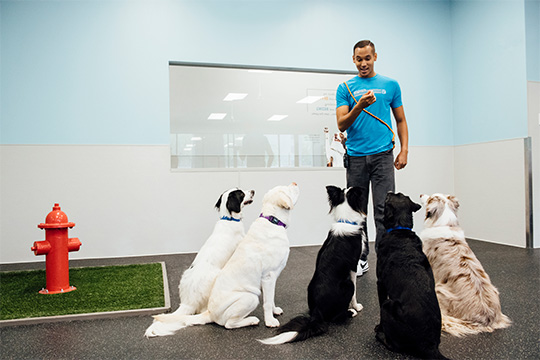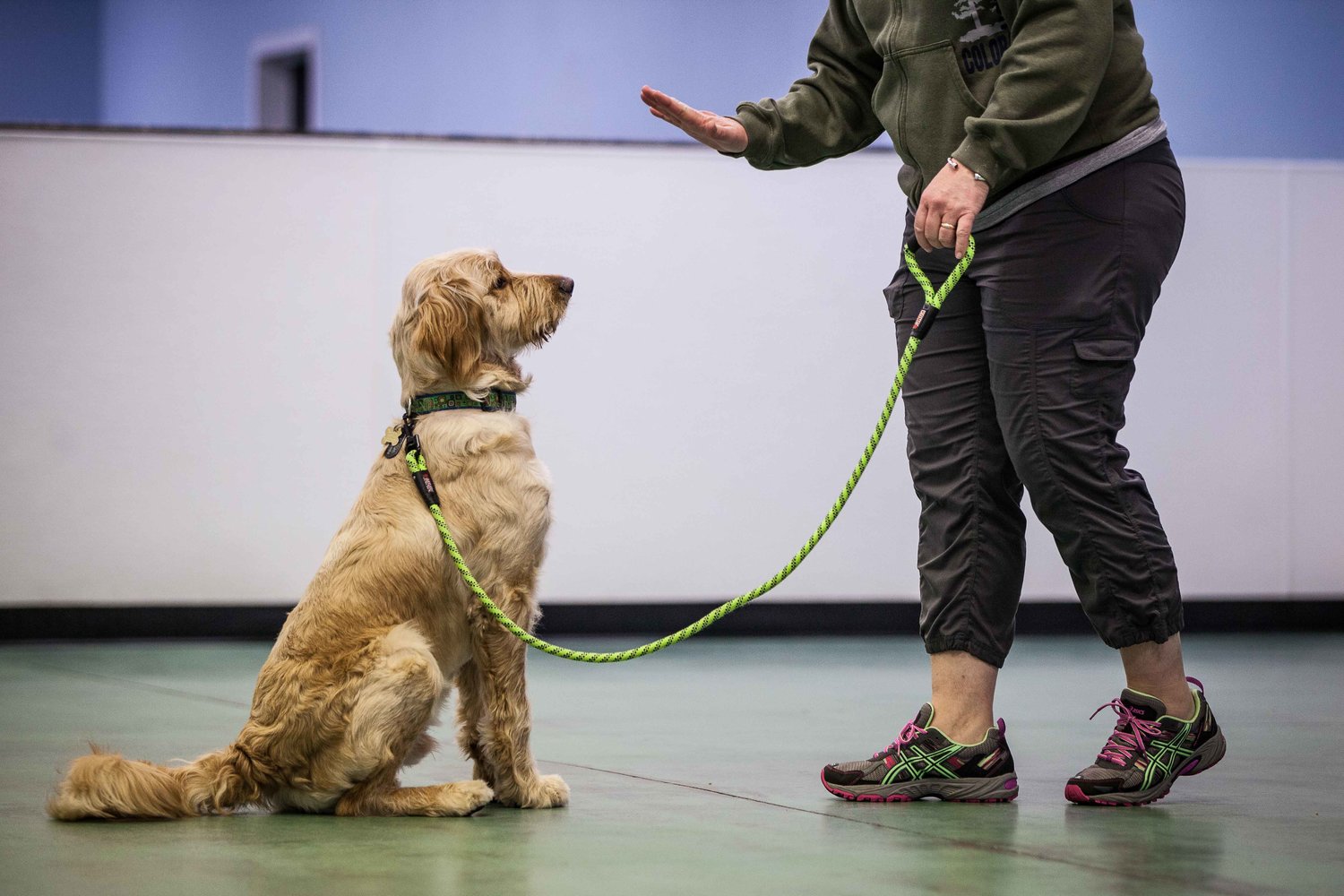Beginner's Guide to Effective Canine Training at Home
Successfully educating a pet at home calls for a nuanced understanding of canine behavior and reliable communication approaches. Establishing clear training objectives, making use of high-grade rewards, and keeping consistency throughout member of the family are important aspects. Integrating training into everyday routines can improve both interaction and retention. Nevertheless, numerous amateur trainers encounter obstacles that may prevent development. To browse these intricacies efficiently, it's important to explore numerous vital elements that can change your approach and lead to a harmonious partnership with your family pet. What basic concepts should every beginner grip to ensure success?
Understanding Pet Dog Actions
Recognizing pet actions is crucial for reliable training and promoting an unified partnership between people and their canine companions. Canines communicate mostly via body movement, vocalizations, and facial expressions, making it important for owners to interpret these signals properly. Acknowledging habits such as tail wagging, roaring, or cring can offer insights right into a pet dog's emotional state and objectives.

Typical behavior issues, such as aggressiveness, anxiousness, or extreme barking, usually stem from misunderstandings or unmet requirements. Observing and dealing with these concerns without delay can stop escalation and make sure a favorable training experience. By promoting a deep understanding of pet behavior, proprietors can customize their training approaches to match their canine buddies, inevitably leading to a pleased and well-behaved family pet.
Crucial Training Tools
A well-appointed training area can significantly boost the performance of pet training at home. Crucial training devices make sure that both the instructor and the pet can participate in productive sessions that foster knowing and bonding.

Buying a tough leash and a comfortable, well-fitting collar or harness is crucial for safety and control. These tools help develop limits and make certain the dog stays safe and secure throughout training. Furthermore, an assigned training area, without diversions, aids focus for both the pet and the instructor.
Training help such as training pads, cones, or agility devices can additionally boost the experience by presenting selection and challenges. Lastly, having a notebook or digital app for tracking progress can be vital, allowing you to keep in mind successes and locations for renovation. Utilizing these essential devices will certainly develop a favorable training environment and lay the foundation for efficient discovering.
Producing an Educating Routine
Establishing a consistent training regimen is essential for reliable pet training in your home. A well-structured regular not only helps in reinforcing wanted behaviors however likewise provides your pet dog with a complacency and predictability. To produce a reliable training routine, begin by recognizing certain training objectives, such as basic commands, leash walking, or check out here house-training.
Pick a marked time daily for training sessions, ideally when your canine is responsive and sharp. Sessions ought to be brief, roughly 5 to 15 mins, to preserve focus and prevent tiredness. Consistency in timing and atmosphere will improve your pet dog's knowing experience.
Integrate training right into day-to-day activities to enhance abilities. Practice commands during strolls or mealtime, which incorporates finding out into natural regimens. Furthermore, continue to be adaptable and change the regular as needed, accommodating your pet dog's power degrees and state of mind.
Positive Reinforcement Techniques
Favorable support methods are basic to effective pet dog training, promoting preferred actions via rewards as opposed to punishment. This approach uses favorable stimulations, such as deals with, praise, or play, to motivate canines to repeat particular actions. The cornerstone of this technique is timing; rewards ought to be given immediately adhering to the desired habits to produce a clear association.
When applying favorable support, it is important to pick benefits that are encouraging for your pet. High-value deals with, such as tiny items of poultry or cheese, can be especially reliable during training sessions. Furthermore, varying the incentives can keep your pet's passion and enthusiasm.
Begin with easy commands, like "rest" or "stay," and slowly progress to much more complicated jobs. Uniformity is crucial; make sure that all household members make use of the very same commands and benefit systems to avoid complication.
Furthermore, it is crucial to stay patient and prevent frustration. Pets, like humans, find out at their very own speed. By cultivating an encouraging training environment through positive reinforcement, you can improve your pet's understanding experience while strengthening the bond between you and your hairy buddy, preparing for successful training end results.
Usual Training Challenges
While educating a pet dog at home can be a gratifying experience, it commonly comes with a set of common obstacles that can test both perseverance and uniformity. One prevalent concern is diversion. Canines might come to be quickly averted by sounds, movements, or perhaps fragrances in their atmosphere, making it tough to maintain their emphasis throughout training sessions.
Another difficulty is disparity in commands and support. If relative utilize different signs or incentives, it can impede and perplex the pet progress. Establishing a unified technique is vital for reliable communication.
Additionally, pet dogs can experience disappointment or stress and anxiety, specifically if they do not comprehend what is anticipated of them. This can lead to unwanted behaviors, such as barking or eating.
Finally, the timing of reinforcement is critical (Dog training). Postponed benefits can reduce the effectiveness of positive support, this as pet dogs might fall short to link the actions with the incentive
Getting rid of these challenges needs dedication, clear interaction, and an organized training strategy. Recognizing and resolving these usual challenges will certainly lead the way for a more effective and delightful training experience in the house.
Conclusion
Finally, successful pet training in the house demands a thorough understanding of canine habits and reliable interaction methods. By developing clear training objectives and making use of premium deals with along with favorable reinforcement, the training process becomes more gratifying for both the pet dog and the trainer. Versatility, patience, and uniformity are vital parts that promote knowing. Eventually, incorporating training right into everyday routines improves the bond between dog read this article and owner, making the experience both efficient and pleasurable.
Establishing a consistent training routine is necessary for reliable pet dog training at home.Positive reinforcement strategies are fundamental to effective pet training, advertising wanted behaviors through benefits instead than penalty (Dog training). By fostering an encouraging training atmosphere via positive support, you can improve your dog's learning experience while reinforcing the bond between you and your furry friend, laying the foundation for effective training end results
In final thought, effective canine training at home requires a detailed understanding of canine behavior and reliable communication strategies. By establishing clear training objectives and utilizing high-grade treats along with favorable reinforcement, the training procedure becomes extra satisfying for both the instructor and the canine.